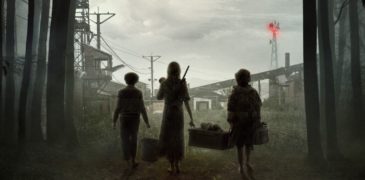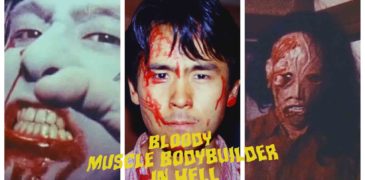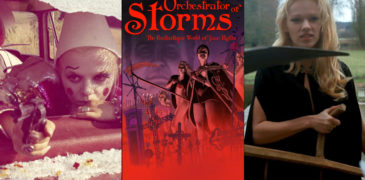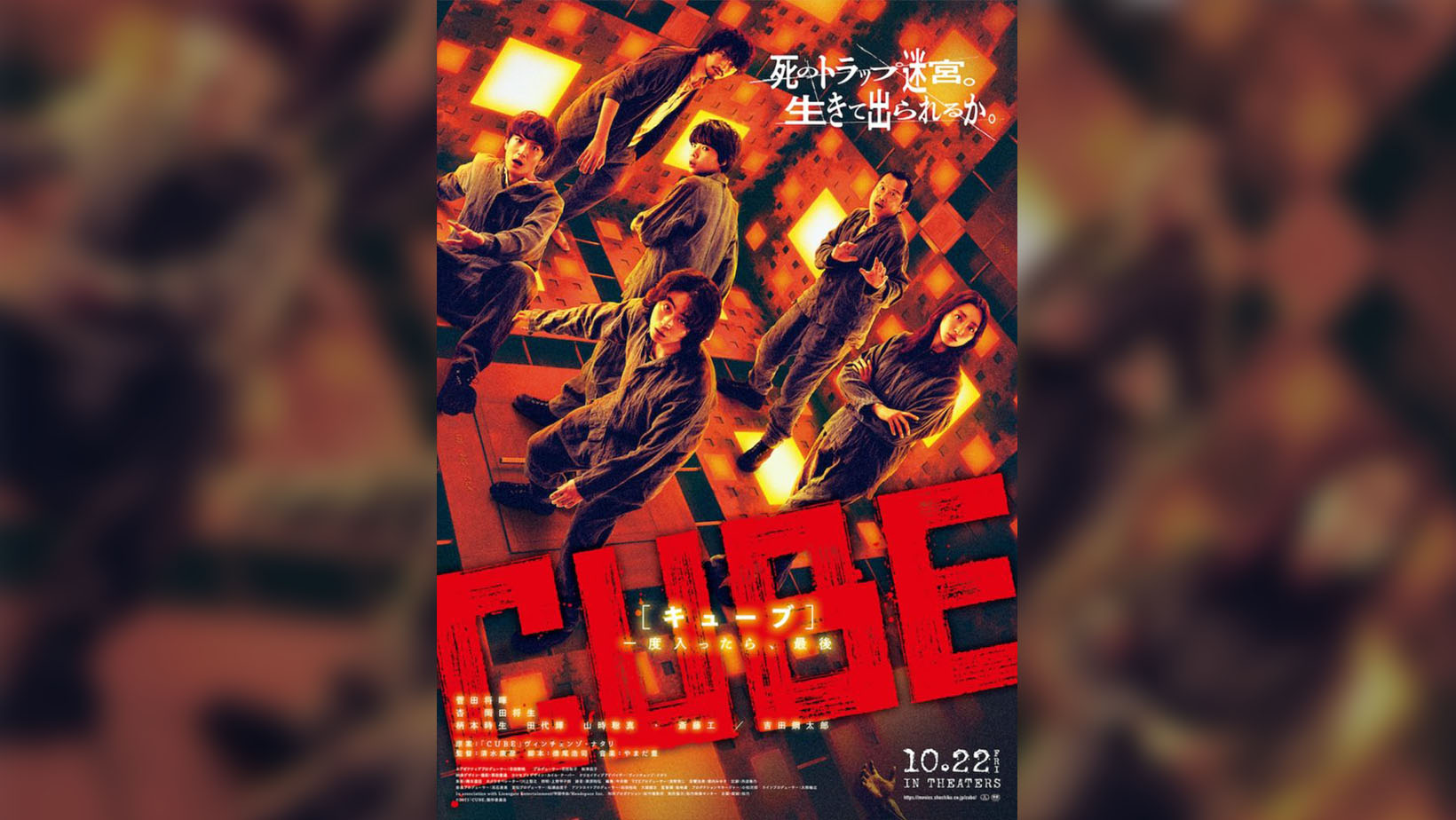
The term “remake” is often met with blatant vitriol and is usually accompanied by assertions that Hollywood is either running out of ideas or is cashing in on the audience’s nostalgia. But what if Hollywood isn’t the wizard behind the curtain of the remake? What are the opinions when a country outside the United States is responsible for adapting someone else’s work? In this particular case, Japan, which has been the source of many of these American remakes, beat Hollywood to the punch with their re-imagining of Cube, a Canadian horror film that many consider to be a cult classic. While this isn’t the first time Japan has remade a foreign property, it’s certainly uncommon. Perhaps this is the reason why I was so intrigued; when Hollywood produces a new remake, no one is ever really surprised anymore. A Japanese remake of Cube, however, definitely caught the attention of many of us.
It goes without saying that not every remake has been shunned by moviegoers. The Ring, for example, an American remake of Hideo Nakata’s now classic J-horror flick Ringu, sparked quite the phenomenon back in 2002. When remaking Japanese horror films became a trend, there was a palpable wane in the fervor of each project. Quantity does not always equal quality, as they say! Because this remake came out of left field, I was willing to embrace it with open arms. Another contributing factor to my openness was the fact that I had never watched the original Cube before, despite it having been recommended to me several times. I contemplated watching it before seeing this new iteration but ultimately decided against it to have the most unbiased experience possible. I instead opted to watch it after the fact to see how they compared.
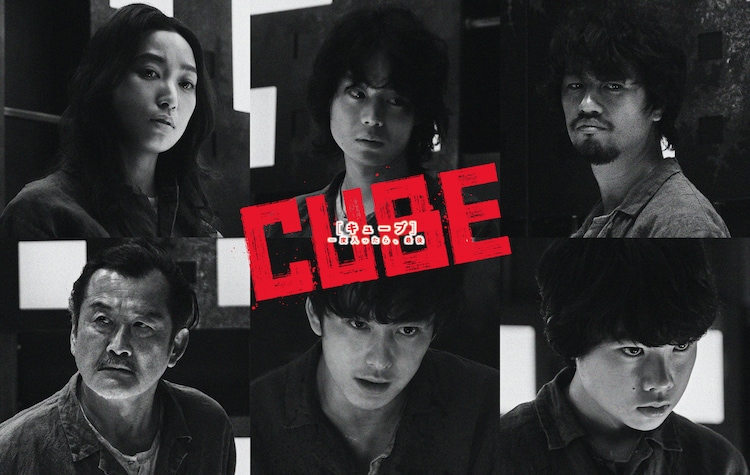
The opening scene wastes no time establishing the basic premise. An unnamed character carefully examines a perfectly squared room illuminated by an array of smaller squares that surround the perimeter of the walls. What he doesn’t know, but soon finds out, is that the room is booby trapped. After falling victim to said trap, we cut to an identical room with two men and one young boy. The three of them have very vague recollections of where they were before waking up, and they have absolutely no idea how they ended up here. When a fourth person enters the room, they surmise that they’re trapped in a giant maze-like cube made up of cubic cells and must work together to find a way out. To make matters worse, some of the rooms are booby-trapped like the one from before, and finding two more prisoners only adds to the drama.
Although I kept the synopsis as vague as possible and refrained from exposing any of the big reveals or major details, a lot of you will no doubt be able to guess how things go down, even if you haven’t seen the original film. I suppose there are only so many ways to fill up the runtime of an escape room type of film, but I was moderately surprised at just how many conventional tropes were utilized. To clarify, I don’t think tropes are a bad thing. On the contrary, I believe that they are still used to this day because they continue to prove effective in almost any genre you can think of. With that said, I wasn’t disappointed by the inclusion of these tropes, but it was certainly unexpected. Thankfully there was more to hold my interest throughout the film, especially since I’m a big fan of character interaction. Having six characters that know nothing about each other locked in a room (or series of rooms) is a recipe for interesting human exchanges.
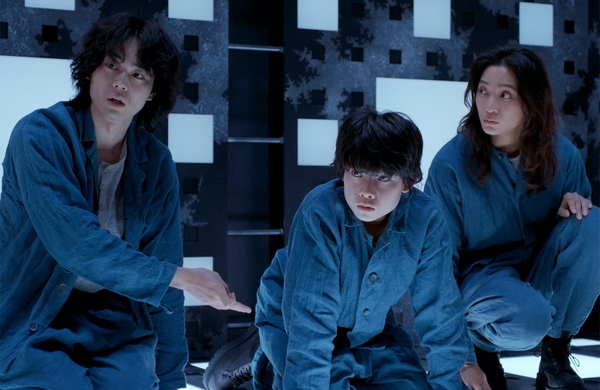
Of the six characters, Yuichi Goto, who happens to be the lead, was by far the most likable. His seemingly natural ability to care for the strangers around him made me root for him from the start. The bond that he forms with 13-year-old Chiharu Uno is the heart of the film and emulates a strong sibling dynamic that many viewers may resonate with. Chiharu-kun reveals that he’s not very fond of adults, which becomes a point of conflict once 62-year-old Ando is introduced. Ando is one of the last two party members to be found and was probably my least favorite of the bunch, but probably not the worst. I guess I’m not very fond of adults either! With the frustratingly stoic female character Kai, the nervous Shinji Ochi, and the cool-headed Ando, who is possibly my second favorite character, we have ourselves a sufficiently eclectic mix of varying personalities to keep the film’s stride going strong.
If, like me, you are mostly unfamiliar with the original film and have only read the synopsis and/or seen the trailer, you may be expecting a series of Saw-like death sequences and traps. You would only be half right though; the characters do in fact spend almost the entire film in the Rubik’s cube-shaped maze avoiding death traps, but when someone falls victim to said trap, they’re never as bloody as one might have anticipated. The opening sequence mentioned above features the most gruesome death of the film, and the rest of the scenes that follow only pale in comparison. The threat of the traps is felt through near-misses and implications rather than explicit consequence, so those of you looking for a gore-fest will have to look elsewhere. I remember being told about one particular scene in the original film regarding a death, so I wondered how the two compared in that regard.

Before completing this review, I watched the original Cube to relieve my curiosity. While I believed it was necessary to watch this remake first so my mind wasn’t clouded by prejudice, I also found it important to compare the two at the end. It won’t be a matter of which film was “better”, because that will be entirely subjective, but more so about which version you would be the best audience for. To start, the original film runs only ninety minutes while the remake runs for one hundred and seven minutes. This eighteen minute difference allowed the remake to flesh things out a little bit more and delve into some of the character’s inner demons. The remake felt much more character-driven while the original was mostly focused on the escape. That’s not so say that the original characters were lacking in any way, they still felt adequately developed despite the faster pace.
The original is also a bit more gruesome when it comes to the overall violence. I would say that there’s an equal number of deaths within both films, but the original executed them in a much more grisly way, even if they ended up being similar. And that’s the tricky thing about remakes; fans want their favorite scenes to be included but not butchered. A shot-for-shot re-imagining wouldn’t satisfy as it would render the film pointless. Though I wasn’t the best audience for Japan’s version of Cube, I have a lot of respect for its balance of taking creative liberties and remaining faithful to the source material. I think if you’re open to a more sentimental version of an escape room experience and don’t mind familiar Hollywood story beats, the remake will bode fine for you. If you’re looking for something a bit more straight forward that doesn’t stray from the basic premise, stick to the original.
More Film Reviews
The generally agreed definition of a snuff film is a real (not staged) filmed murder. In some cases, it is viewed for arousal. However, this is somewhat incorrect, as by… Continuing on directly from the end of the first movie, after a quick Day 1 prologue showing off the initial stages of the invasion, A Quiet Place Part 2 follows… Being one of the most attributed inspirations in filmmaking, filmmakers around the world have cited The Evil Dead series as a motivation to create cinema for themselves. The mastery of… The Mildew from Planet Xonader is a 2015 English-language Italian splatter horror film, written and directed by Giulio De Santi and Neil Meschino, with additional writing from Dave Fogerson and… In our modern times, with seemingly endless movie selections available at the touch of a button and in high definition quality, it seems crazy that anyone would anyone choose to… Jean Rollin was a French director of fantastique films whose films remained obscure throughout most of his career. Thanks to longtime admirers, his haunting and poetic visions are seducing a…Top 15 Pseudo-Snuff Films – Diamonds In The Snuff
A Quiet Place Part 2 Review (2021) – The Verdant Fall of Civilisation
Bloody Muscle Bodybuilder in Hell (2012) Film Review – A Rush Of Blood To The Dead
The Mildew from Planet Xonader (2017) Film Review – Beautifully Moist
Cult of VHS (2022) Documentary Review: Love and Obsolete Media
Orchestrator of Storms: The Fantastique World of Jean Rollin (2022) Film Review – An Excellent Introduction to the Artistry of an Obscure Filmmaker

Your typical ghoul next door; film enthusiast, horror fanatic, J-horror nerd, aspiring horror host, and all around geek. Will likely be found cuddling with their cat and reading an old smelly book, or stuffing their face with popcorn at the cinema!


